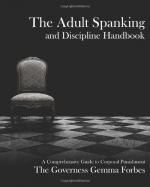|
This section contains 253 words (approx. 1 page at 300 words per page) |
Corporal Punishment: Abuse or Discipline?
In the case of Ingraham v. Wright (1977), the US Supreme Court ruled that, "the eighth amendment is intended to protect the rights of people convicted of crimes against the state, not school children with disciplinary problems...also, ordinary paddling neither violates any substantive rights nor causes a student to suffer any grievous loss." This was stated after Ingraham, a student, sustained bruises that required medical attention and absence from school.
Paddling is common in private schools, I went to many different private schools here, and I was paddled plenty of times. It is reserved for children who are causing problems, which often prevents the rest of the class from learning. This is a measure that should be taken, and I totally support it. A student should have structure both in the home and at school. I'm sure paddling and other forms of discipline are very effective, not only to the bad student, but also as a warning to other students. This technique is probably more effective on a certain age group, and maybe not appropriate for older students in middle or high school, such as Ingraham.
Corporal punishment is an effective disciplinary technique, and is far from inappropriate in elementary schools. With this system enforced in schools, children realize that bad behavior is not acceptable anywhere. While the main burden should be on the parents, some parents do abuse that privilege, and school punishment should never go into the boundaries of abuse in their disciplinary measures.
|
This section contains 253 words (approx. 1 page at 300 words per page) |


